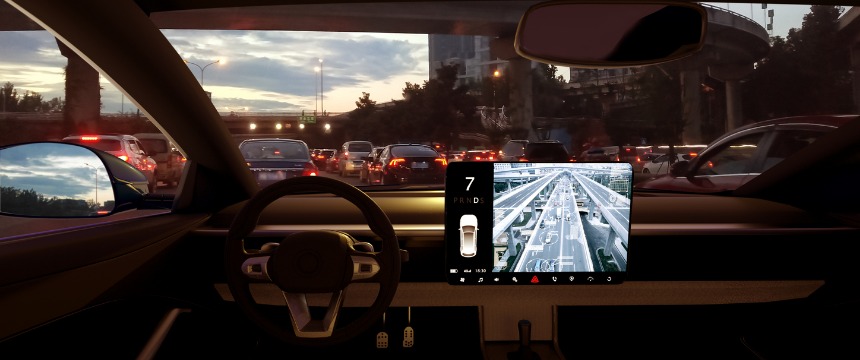
Everyone will benefit from self-driving cars, but to varying degrees. Society, from a safety standpoint, benefits from eliminating some or all of the 34,247 motor vehicle fatalities per year. The elderly and disabled can benefit by regaining independence. Commuters can benefit by turning their dreaded drive to work into a relaxing or productive session they look forward to. But what about car manufacturers?
Car manufactures may potentially benefit the most from self-driving cars. Assuming that they develop safe, fully autonomous robotaxis, then a car manufacturer may be able to operate the car as a robotaxi and potentially generate ten times the sale price of a vehicle over the life of the vehicle. But before this can happen, a company has to produce a fully self-driving vehicle at a reasonable cost. From a hardware standpoint, a key challenge is sensor technology. Lidar, a critical sensor for autonomous cars that can bridge the deficiencies in today’s camera and radar systems, is a significant hurdle due to its cost (e.g., up to $75,000), size, and complexity.
Therefore, it comes as no surprise that lidar companies are benefiting from large investments and partnerships this year to develop advanced lidar solutions. For example, Sense Photonics recently emerged from stealth mode and made headlines with a $26 million round advertising a whole new approach that allows for an ultra-wide field of view and flexible installation. Sense Photonics claims they have a “flash” lidar which can illuminate the entire scene with one giant flash, as opposed to the scanning or sweeping systems employed by the early popular lidars systems, such as those from Velodyne. Luminar recently announced they developed a new LIDAR sensor that weighs less than 2 pounds, is the size of a soda can, and will cost as little as $500. Another upstart, Lumotive, announced that it has a solid-state sensor with metamaterial (e.g., a non-naturally occurring material that can have a negative refractive index) that includes tiny tunable components that can slow down parts of the laser beam in order to steer the beam. Steering a laser beam in this manner, according to Lumotive, may eliminate the need for mechanically moving parts. Yet another lidar company, Quanergy, touts that they have a fully solid-state automotive grade lidar based on optical phased arrays that do not include any moving parts on any scale, while offering an unparalleled level of quality and reliability.
While the timeline is uncertain, it is likely that self-driving cars will be safer than human drivers, and that auto manufacturers and technology suppliers will find opportunities to increase profits. However, this will likely bring about certain disadvantageous. Some disadvantages are obvious, such as the loss of transportation-related jobs due to automation, but there may be other less obvious disadvantages. If a car manufacturer can make more money by keeping their car, why would they sell it to consumers? Elon Musk thinks that is the case, and part of his “Master Plan” is to enable self-driving hardware to operate as autonomous robotaxis to generate revenue for Tesla itself. While autonomous robotaxis may have many benefits, the inability to buy a reasonably priced car because it is more profitable in the hands of the car manufacturer does not benefit the car shopper!
